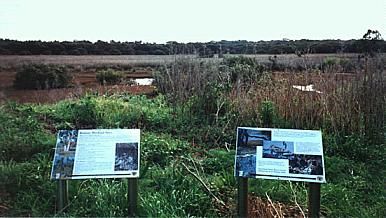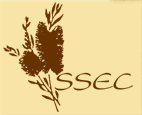Unique Towra Point |
Creation
Towra Point, part of the Kurnell Peninsula, is located only 16 kilometres south of the Sydney CBD. Kurnell was an island one million years ago. The fresh water Cooks/Georges River System that emptied into Bate Bay separated it from the then mainland. When the sea level was stabilising, a tombolo (sand spit) was laid down over sedimentary deposits from the old rivers and linked Kurnell to Cronulla. Towra Point is the Holocene mud and sand delta that built up between the ancient Cooks and Georges Rivers before they changed their course some 10,000 years ago. |
 |
| As Towra Point was formed, sedimentary deposits from the ancient rivers covered the rich peat substrate. This produced a unique and delicate foundation for the establishment of the largest and most accessible extent of mangroves and saltmarsh areas in the Sydney region. About 50 per cent of the remaining mangroves and most of the saltmarshes within Sydney are to be found here in the Towra region of Botany Bay. Tidal currents, dredging and port works, together with waves from ocean swells and winds across Botany Bay and Woolooware Bay, today influence the shape of the 600 hectare Towra Point which has become a major breeding, feeding and roosting site for many threatened bird species. |
 |
Recognition of the threatened ecological biodiversity of Towra Point came in 1974 when Australia signed the International Convention for the protection of Wetlands of International Significance. In 1975, the Federal Government acquired 281.7 hectares of land at Towra for conservation as a nature reserve, which has since been extended to 410 hectares. It was the first Nature Reserve to be established by the Federal Government in Australia. When the Commonwealth/State Land Exchange Agreement was signed in 1979, Towra Point wetlands reserve was transferred from the Federal Government to the State Government.
Approximately 200 bird species have been recorded in the Towra Point Reserve. The flora is the last remnant of the type of vegetation that would have dominated the Botany Bay area. Nearly 300 plant species have been identified. The conservation significance of the wetland complexwith its diversity of habitats ranging from littoral forest, tidal wetlands, seagrasses, mangroves, saltmarshes, sandspits, bars, mudflats, dunes and beaches, occupying approximately 400 hectaresis recognised by Local, State and Federal governments. The fact that this primordial remnant endures within the Sydney area is extraordinary. |
| top of page |



